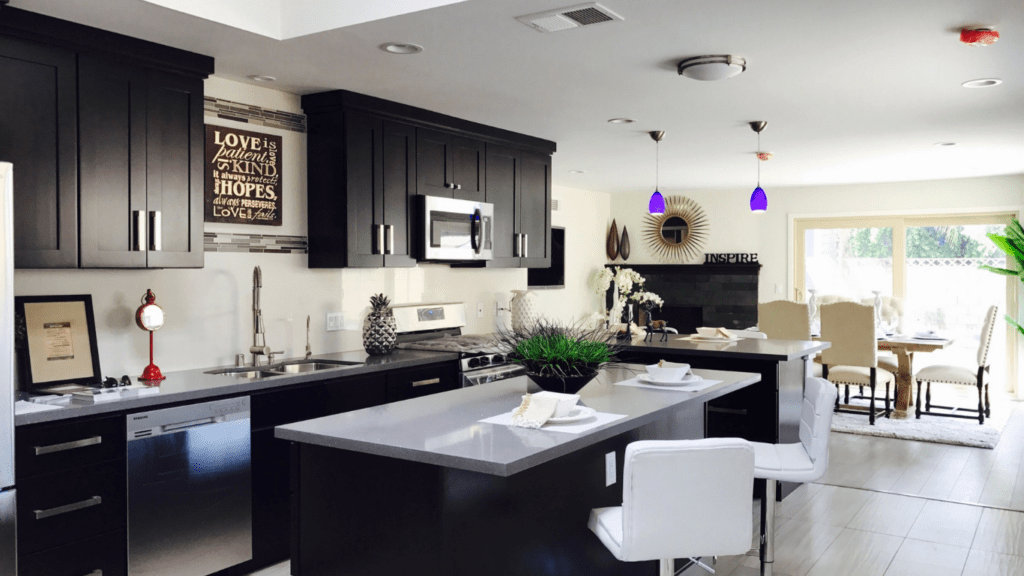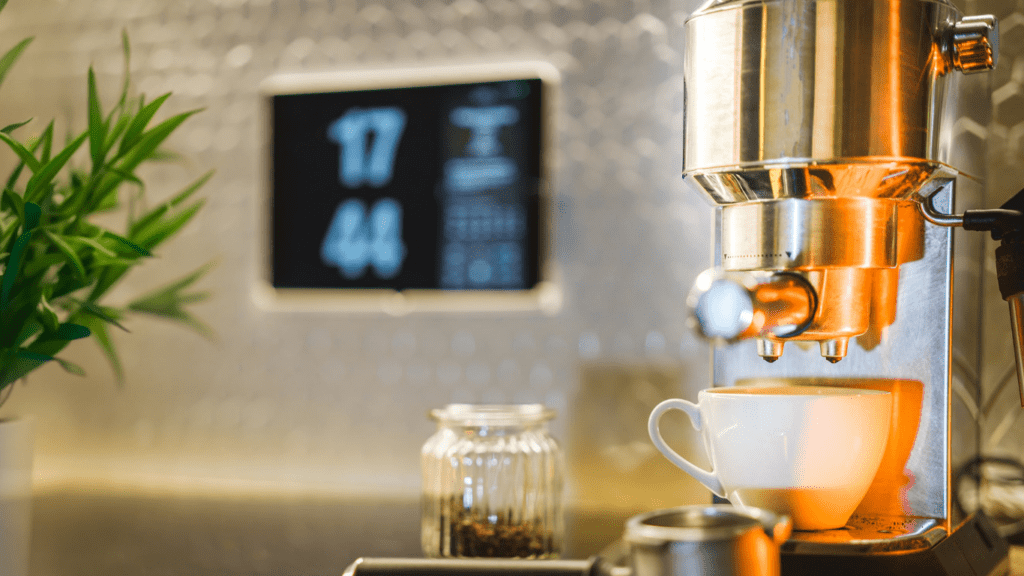Understanding Smart Home Technology
Smart home technology refers to interconnected devices that automate tasks and functions, providing convenience and efficiency. These devices communicate through networks like Wi-Fi, Zigbee, and Z-Wave, enabling users to control them remotely via smartphones or voice assistants.
Key components of smart home systems include:
- Smart Hubs: Central units that manage and connect all smart devices. Examples: Amazon Echo, Google Home.
- Smart Appliances: Internet-connected devices that perform specific tasks. Examples: Smart refrigerators, washing machines.
- Sensors and Actuators: Devices that detect changes or perform actions. Examples: Motion detectors, smart locks.
Advantages of incorporating smart home technology include:
- Convenience: Users control devices from anywhere using apps. For example, adjusting thermostats remotely.
- Energy Efficiency: Smart devices optimize energy use. For instance, smart lighting adjusts based on occupancy.
- Security: Enhanced surveillance and alerts. Smart cameras notify users of suspicious activity.
Understanding these elements is crucial for integrating smart technology into a villa, ensuring all devices work harmoniously.
Choosing the Right Smart Home Appliances

Selecting the appropriate smart home appliances ensures a seamless and efficient integration into your villa. Several factors can guide this decision.
Factors to Consider
Compatibility
Ensure devices are compatible with existing home networks like Wi-Fi, Zigbee, or Z-Wave. Incompatible devices may cause communication issues.
Ease of Use
Opt for appliances with intuitive interfaces. Complicated controls or setups can diminish the convenience and efficiency of smart technology.
Energy Efficiency
Pick appliances with high energy ratings. Smart technology should reduce utility costs and environmental impact.
Reliability
Choose appliances from reputable brands. Reliable devices minimize maintenance and support seamless operation.
- Philips Hue: Known for smart lighting solutions. Their bulbs offer easy integration and extensive customization.
- Nest: Specializes in smart thermostats and security devices. Nest products provide efficient energy management and robust security.
- Samsung SmartThings: Offers a comprehensive range of devices. SmartThings supports various protocols like Zigbee and Z-Wave.
- Amazon Echo: Focuses on voice-controlled devices. Echo products enhance convenience through seamless voice integration.
- Ring: Renowned for smart security solutions. Ring products offer video doorbells and cameras with real-time alerts.
Choosing the right smart home appliances maximizes the benefits of your villa’s smart home ecosystem. Consider compatibility, ease of use, energy efficiency, and reliability to make informed decisions about brands like Philips Hue, Nest, Samsung SmartThings, Amazon Echo, and Ring.
Setting Up Your Smart Home Infrastructure
Integrating smart home appliances in your villa starts with setting up a robust infrastructure. Essential gadgets and network requirements are critical to ensuring seamless operation.
Essential Gadgets and Devices
Identify key smart devices to create a coherent system. Smart hubs from Amazon Echo or Samsung SmartThings control various appliances through one interface. Look into smart lighting options like Philips Hue for automated, customizable lighting. Nest offers high-quality smart thermostats, providing efficient climate control. For security, use Ring video doorbells and cameras to monitor your property in real-time. Smart locks enhance access control and integrate easily with other security devices.
Network and Connectivity Requirements
Ensure reliable, high-speed internet throughout your villa. Wi-Fi 6 routers enhance connectivity, reducing latency and supporting more devices. Use mesh Wi-Fi systems like Eero or Google Nest Wi-Fi for uniform coverage. For critical applications, consider Ethernet connections to prevent signal drop-offs. Zigbee and Z-Wave protocols offer low-power, mesh networking solutions for connecting sensors and actuators, complementing your Wi-Fi network efficiently.
Integrating Smart Appliances Room by Room
Integrating smart appliances into each room of a villa maximizes convenience and efficiency. Here’s how to enhance key areas with smart technology.
Living Room
Smart lighting enhances ambiance and control. I prefer Philips Hue bulbs for their customizable colors and integration with major smart home systems. Smart speakers like Amazon Echo or Google Nest improve convenience by controlling appliances and providing entertainment. A smart thermostat, such as the Nest, adapts to my preferences, optimizing comfort and energy use. Consider smart blinds to adjust natural light and privacy settings automatically.
Kitchen
Smart appliances in the kitchen streamline cooking and maintenance. Smart refrigerators, like Samsung’s Family Hub, notify me of expired items and allow remote temperature control. Smart ovens, such as those by Whirlpool, offer remote start and precise cooking settings. Smart dishwashers save energy and time by optimizing wash cycles. Integration with voice assistants, like Amazon Alexa, enables hands-free operation of these devices.
Bedroom
The bedroom benefits from devices that enhance comfort and rest. Smart lighting systems, like LIFX bulbs, allow me to set wake-up and sleep routines with gradual brightness changes. Smart thermostats maintain optimal temperatures for sleep. Noise-canceling smart speakers create a serene environment by playing white noise or calming music. Smart plugs automate bedside lamps and device charging, making it easy to manage electronics without disruption.
Bathroom
Smart technology in the bathroom focuses on convenience and hygiene. Smart mirrors display information like weather and calendar updates, aiding in morning routines. Smart scales, such as those by Withings, track health metrics and sync with fitness apps. Smart showers allow precise temperature control and can save water by optimizing flow rates. Smart toilets improve hygiene with features like automatic flushing, bidet functions, and seat warming options.
Integrating smart technology in a villa requires a systematic approach for each room, enhancing luxury and modern living.
Ensuring Security and Privacy
When integrating smart home appliances into a villa, I focus on security and privacy as critical components. Each connected device heightens the risk of cyber threats.
Secure Network Setup
I start by securing my home network. This involves using a robust Wi-Fi 6 router with strong encryption protocols like WPA3. I regularly update firmware to mitigate vulnerabilities and disable unnecessary features, reducing potential attack points.
Strong Passwords and Multi-Factor Authentication
Creating strong, unique passwords for every smart device is essential. I enable multi-factor authentication (MFA) to add an extra layer of security. This includes not just my network but also individual devices, such as smart locks and cameras.
Regular Software Updates
Regular updates are crucial. I ensure my devices receive the latest firmware and software updates. This practice guards against newly discovered vulnerabilities and improves overall device functionality.
Secure Control Hubs
I choose reputable brands for my smart hubs, given they are central to smart home operations. These hubs usually receive more frequent updates, providing better security features. Philips Hue Bridge and Samsung SmartThings are top choices for integration and security.
Encrypted Communication
Encryption is vital for data transmission. I select devices which offer end-to-end encryption. This ensures that my data, whether it’s footage from my security cameras or thermostat settings, is not intercepted during transmission.
Privacy Settings
Customizing privacy settings is another critical step. I disable unnecessary data collection and use. Managing permissions and limiting access to only essential functions helps maintain privacy.
Monitoring and Alerts
Real-time monitoring and alerts offer an added layer of security. I use apps which alert me of unauthorized access attempts or suspicious activities. This helps me respond quickly to potential threats.
Dedicated Guest Network
I establish a separate guest network for visitors. This keeps my main network and connected smart appliances isolated from guest devices, which might be less secure.
By implementing these security and privacy measures, I ensure that my smart home operates safely and efficiently.

 Michael Matherne has been instrumental in the development of Villa Estates Luxe, leveraging his extensive background in real estate and digital marketing to shape the platform's success. His strategic insights have been crucial in curating the latest news and market trends, ensuring that users receive timely and relevant information tailored to their needs. Michael has also been pivotal in enhancing the overall user experience, implementing innovative features that make navigating the site seamless. His commitment to providing high-quality content and fostering a community of informed buyers and investors has significantly contributed to Villa Estates Luxe’s reputation as a trusted resource in the luxury villa market.
Michael Matherne has been instrumental in the development of Villa Estates Luxe, leveraging his extensive background in real estate and digital marketing to shape the platform's success. His strategic insights have been crucial in curating the latest news and market trends, ensuring that users receive timely and relevant information tailored to their needs. Michael has also been pivotal in enhancing the overall user experience, implementing innovative features that make navigating the site seamless. His commitment to providing high-quality content and fostering a community of informed buyers and investors has significantly contributed to Villa Estates Luxe’s reputation as a trusted resource in the luxury villa market.